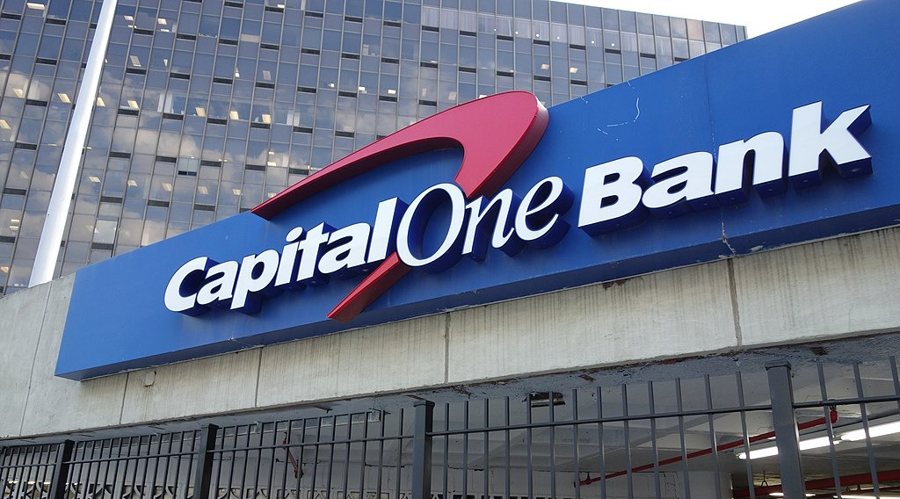While Capital One customers scramble for answers over inaccessible accounts, America’s banking giants are popping champagne in a banner week for the industry.
Capital One’s Banking Outage – A Crash Course in Chaos
Capital One customers had an unwelcome surprise this week: a widespread banking outage that left deposits and accounts out of reach. According to a statement from Capital One, the outage stemmed from unspecified “technical issues.” While the company worked to resolve the problem, users vented their frustrations across social media, flooding platforms like Twitter and Reddit with reports of unresponsive apps, missing funds, and a deafening silence from customer service.
From California to New York, the outage has left millions of Capital One customers questioning their bank’s reliability.
A Vague Apology, Little Resolution
Capital One’s first official statement acknowledged the issue but provided little clarity. “We are experiencing a technical issue with a third-party vendor that is temporarily impacting some account services, deposits, and payment processing for portions of our consumer, small business, and commercial bank” they said, in a tone that sounded more like a shrug than an apology. Digital banking customers, i.e. everyone, weren’t amused.
We are experiencing a technical issue with a third-party vendor that is temporarily impacting some account services, deposits, and payment processing for portions of our consumer, small business, and commercial bank.
— Capital One (@AskCapitalOne) January 16, 2025
The timing couldn’t have been worse: rent is due, bills are piling up, and Capital One appears to be MIA. While some users have reportedly regained access, others continue to experience outages. The vague nature of the bank’s communications has only added fuel to the fire, with many questioning the company’s preparedness for such scenarios.
The Email
Finally, Capital One informed customers via email on Thursday evening that they anticipate services will gradually return to normal overnight, with most issues expected to be resolved by Friday morning.
Oh so now Capital One wanna send out a email to everybody … pic.twitter.com/lu2juFqX6R
— ѕαge 🇸🇻 (@imsagealexander) January 17, 2025
It’s 10 pm and capital one just now sending emails about what’s going on pic.twitter.com/qJB7gueRRv
— Bustin Cider (@__notnigeluno) January 17, 2025
“Once the systems are restored, we will process all deposits and other transactions that have been delayed,” the email read. So, all should be well. However, we’d suggest that the Capital One customer service team work on their bedside manner.
Social Media Meltdown
As is often the case during high-profile tech failures, social media became the frontline for customer outrage. The hashtag #CapitalOneOutage trended on Twitter, with users sharing screenshots of error messages, blank account balances, and customer service chat windows stuck in limbo.
I think we need to charge capital one a late fee for our own deposits. #CapitalOneDown pic.twitter.com/iA1w16t5fE
— Sec0nd2n0ne 🇵🇦 (@Sec0nd2n0n) January 16, 2025
Capital One if I don’t have my bread in the morning, it’s going to be a issue pic.twitter.com/GKwwbCCGRm
— darksKEN 🖤 (@jiu_bu) January 17, 2025
Memes about vanishing deposits and apps that crash faster than a 1990s desktop proliferated, giving a small silver lining to the crisis: at least the internet still has a sense of humor. One customer quipped, “I think we need to charge capital one a late fee for our own deposits.”
A Stark Contrast: Rivals Thrive
While Capital One customers scrambled for answers, America’s other banking giants were busy celebrating a banner week. Major banks like JPMorgan Chase, Bank of America, and Wells Fargo are reporting record-breaking profits and surging stock prices.
All three major Wall Street indexes saw their biggest daily percentage gains since Nov. 6, thanks to strong earnings from major US banks and December’s consumer price inflation report, which eased fears of re-accelerating inflation https://t.co/xWwXEb3sR0 pic.twitter.com/qdAKN63UPw
— Reuters (@Reuters) January 16, 2025
In stark contrast to Capital One’s outage-induced chaos, these banks are reaping the rewards of strong earnings reports, rising interest rates, and growing consumer confidence. For investors, the message is clear: Capital One might be down, but the rest of the banking industry is far from out.
The Takeaway: Capital One’s Image Problem
This outage is more than just an inconvenience—it’s a stark reminder of the fragility of digital banking infrastructure. In an era where customers demand 24/7 access to their finances, a prolonged outage can be disastrous, both for users and a bank’s reputation.
For Capital One, the fallout may extend beyond angry tweets and temporary glitches. Customers are already questioning whether to stick with a bank that can’t guarantee basic services, and the financial world is watching closely. Meanwhile, rival banks are seizing the moment, shining brighter as Capital One stumbles in the spotlight.
As the dust settles, one thing is clear: Capital One has a lot of explaining—and apologizing—to do.
For more stories around the edge of finance, follow our Trending section.
This article was written by Louis Parks at www.financemagnates.com.TrendingRead More
You might also be interested in reading IMF Publications’ Report Highlights Growing Risks of Generative AI in Financial Sector.



